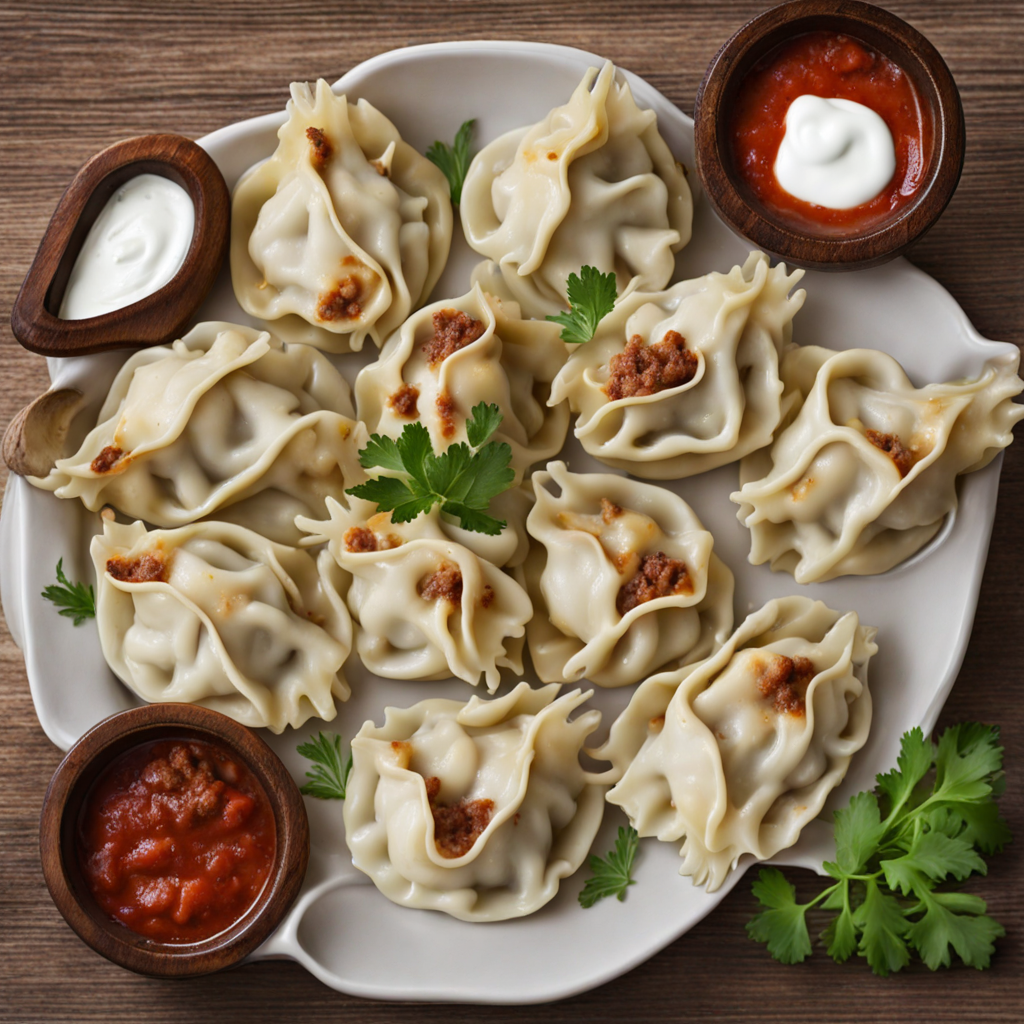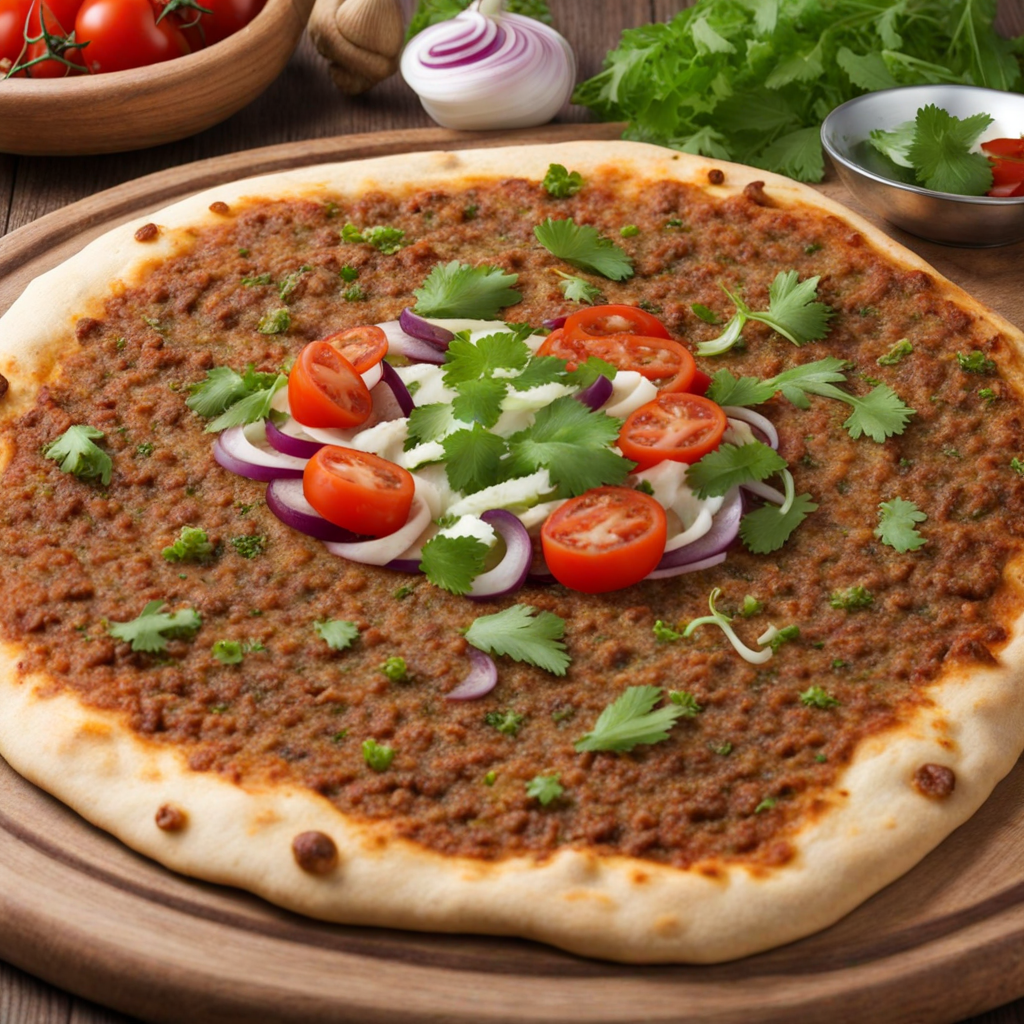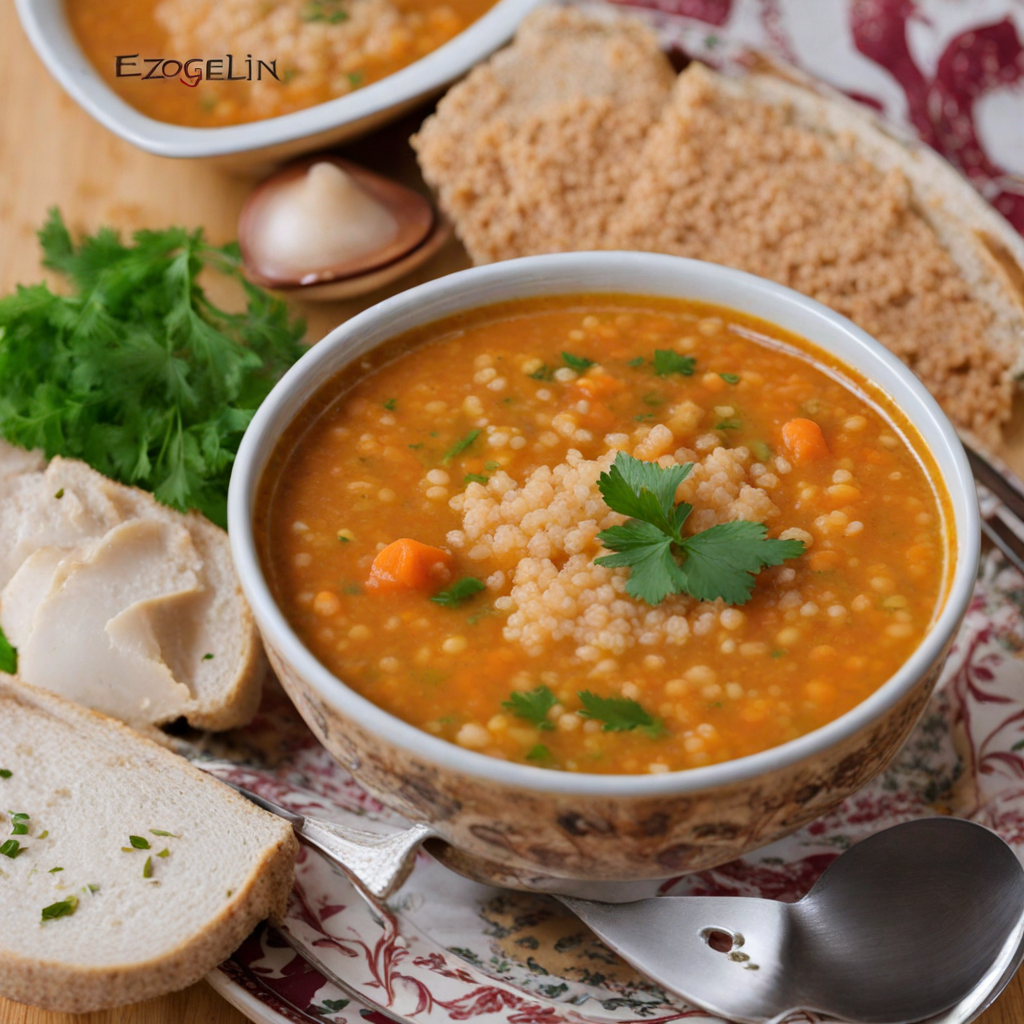Manti
Manti is a traditional Turkish dish that consists of small dumplings filled with a mixture of ground meat, usually lamb or beef, combined with spices and herbs. The dough is made from simple ingredients like flour, water, and salt, rolled out thinly, and cut into squares. Each square is then filled with the meat mixture, carefully folded into little pockets, and sealed. The preparation process is an art form in itself, often passed down through generations, highlighting the importance of family and tradition in Turkish cuisine. The dumplings are typically boiled or steamed, resulting in a tender texture that complements the savory filling. What sets Manti apart is the rich and flavorful sauce that accompanies it. Once the dumplings are cooked, they are topped with a delightful blend of yogurt, garlic, and melted butter infused with paprika and mint. The creamy yogurt adds a cooling contrast to the warm, spiced dumplings, while the butter sauce brings a luxurious richness to every bite. Some variations also include a sprinkle of sumac or a drizzle of chili oil, adding an extra layer of flavor that elevates the dish even further. Manti is often served as a hearty main course and is a beloved comfort food in Turkey, frequently enjoyed during family gatherings and celebrations. The communal aspect of sharing Manti makes it a dish that brings people together, embodying the warmth of Turkish hospitality. Each bite offers a taste of history and culture, making it a must-try for anyone looking to explore the diverse and flavorful world of Turkish cuisine.
How It Became This Dish
The History of Mantı: A Culinary Journey Through Time Mantı, often referred to as Turkish dumplings, is a beloved dish with roots deeply embedded in the culinary traditions of Central Asia, particularly among the Turkic peoples. This delightful food has transcended its humble beginnings, evolving into a symbol of cultural identity and gastronomic pride in Turkey and beyond. To fully appreciate Mantı, we must embark on a journey through its origins, cultural significance, and its development over time. #### Origins and Early History The origins of Mantı can be traced back to the nomadic tribes of Central Asia, where it is believed that the practice of wrapping meat in dough emerged. The earliest records suggest that similar dumplings were made by the Turkic people, who traveled across the vast steppes of Central Asia. These early versions of Mantı were likely simple, consisting of meat fillings encased in thin layers of dough, making them easy to transport and cook over an open flame. As the Turkic tribes began to migrate westward, they brought their culinary traditions with them. This migration led to the formation of various regional variations, influenced by local ingredients and cooking techniques. The introduction of Mantı to Anatolia occurred during the Seljuk Empire (11th-14th centuries), where it found a new home and began to flourish. #### Cultural Significance In Turkey, Mantı is not merely a dish; it embodies the spirit of hospitality and communal dining. Traditionally, it is served during gatherings and special occasions, often prepared by families who come together to create the dish. The process of making Mantı can be a labor-intensive affair, requiring skill and patience, which further enhances its status as a dish that brings people together. The cultural significance of Mantı extends beyond its preparation. It is often associated with the idea of nurturing and care, as it is commonly prepared for loved ones, especially during significant life events, such as weddings and holidays. In Turkish culture, food is a form of expression, and Mantı represents love and warmth, reflecting the values of family and community. #### Development Over Time As Mantı made its way into Turkish cuisine, it underwent a series of transformations, resulting in numerous regional varieties and cooking styles. In Turkey, Mantı is typically filled with ground meat, such as lamb or beef, seasoned with spices like cumin and paprika. The dough is rolled thin, cut into squares, and the filling is placed in the center before folding and sealing the edges. One of the hallmark features of Turkish Mantı is its method of cooking. The dumplings can be boiled, steamed, or baked, each method imparting a unique texture and flavor. Once cooked, Mantı is traditionally served with a generous drizzle of yogurt and melted butter infused with garlic, and often garnished with paprika or sumac, enhancing both its taste and visual appeal. Different regions of Turkey have their own unique takes on Mantı. For instance, Kayseri, a city in central Turkey, is famous for its version, which is smaller in size and often referred to as "Kayseri Mantısı." This variant is characterized by its distinctive shape and the use of local spices. In contrast, the eastern regions of Turkey may incorporate various fillings, such as potatoes or lentils, showcasing the versatility of this beloved dish. In addition to its regional adaptations, Mantı has also made its mark on the international culinary scene. As Turkish immigrants spread across the globe, they brought their food traditions with them, and Mantı found its way into the hearts and kitchens of diverse communities. In places like Europe and North America, Mantı has been embraced by food enthusiasts, often celebrated at cultural festivals and events. #### Modern Innovations and Global Influence In recent years, Mantı has experienced a renaissance, with chefs and home cooks alike experimenting with innovative fillings and presentation styles. Contemporary takes on Mantı include fusion variations that incorporate local flavors and ingredients, appealing to a broader audience. For instance, some chefs have introduced vegetarian or vegan options, utilizing ingredients like mushrooms, spinach, or even cheese, to cater to changing dietary preferences. Social media has also played a significant role in the resurgence of Mantı, with food bloggers and influencers sharing visually stunning images of the dish, inspiring a new generation to explore its rich history and flavors. This digital age has allowed Mantı to transcend cultural boundaries, inviting curiosity and appreciation for its intricate preparation and cultural significance. #### Conclusion Mantı is more than just a dish; it is a culinary narrative that reflects the history, culture, and values of the Turkish people. From its origins among nomadic tribes in Central Asia to its status as a cherished staple in Turkish cuisine, Mantı has evolved while retaining its core essence. It is a dish that brings people together, celebrating the bonds of family and friendship through shared meals. As Mantı continues to adapt and innovate, it remains a testament to the enduring power of food as a cultural connector. Whether served at a festive gathering, a family dinner, or discovered in a restaurant across the globe, Mantı invites all to partake in its rich heritage, offering a taste of the history and warmth that is intrinsic to Turkish culinary tradition. In every bite, there is a story waiting to be told, a legacy waiting to be honored, and a connection waiting to be made.
You may like
Discover local flavors from Turkey







